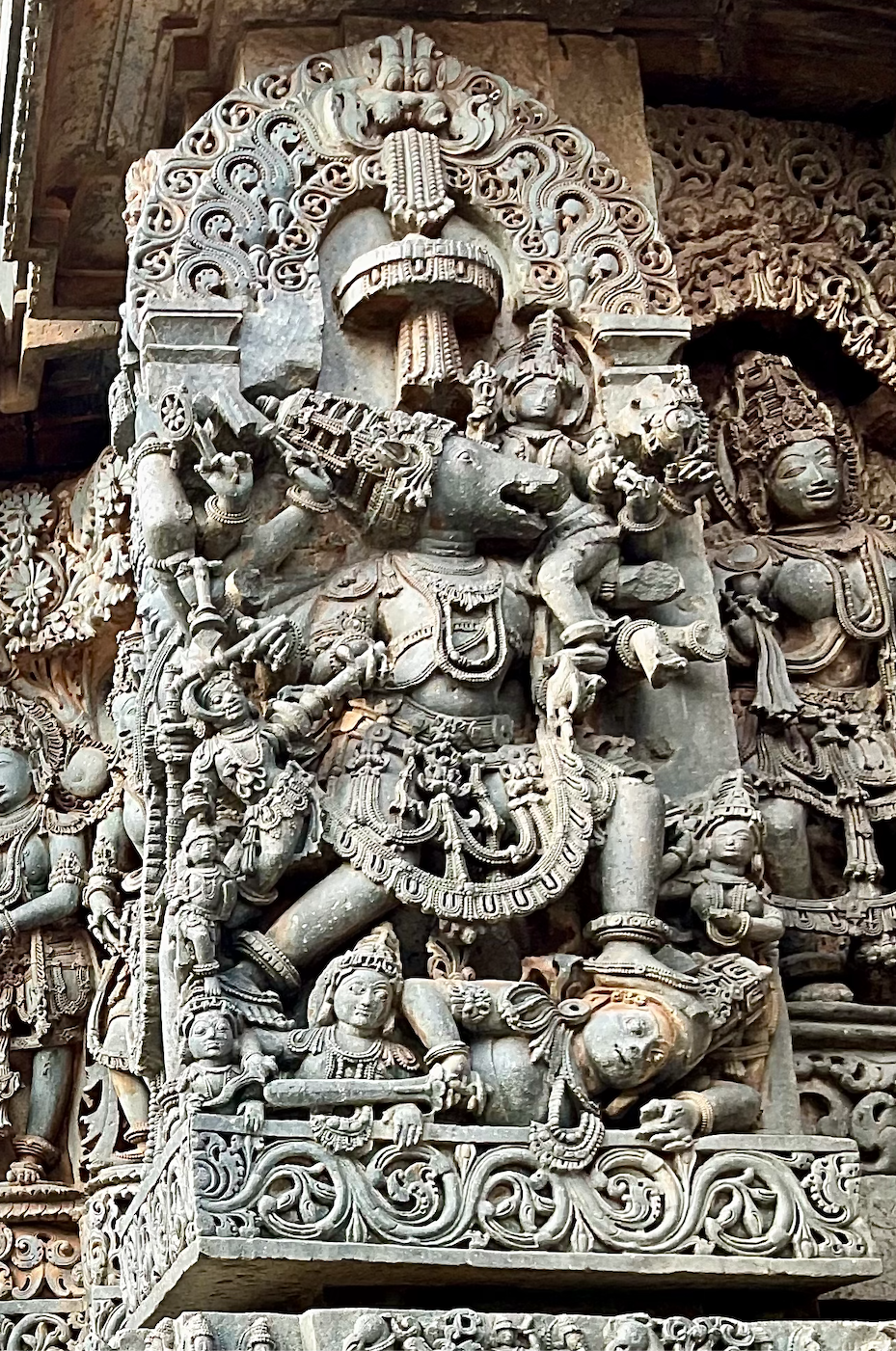
Variation, Composition and Repetition: Mapping the Narrative and Architectural Perspectives of the Assembly in Ravana’s Palace
The twelfth-century Hoysaleshvara temple in Halebidu, Karnataka, showcases a unique Varaha sculpture within a Shaiva setting, offering insight into Hoysala artistry, cultural synthesis, and cross-sectarian representation. This essay explores the Varaha icon through iconology and iconography, emphasizing movement—both literal and figurative. The sculpture, embodying Vishnu's boar avatar saving the Earth, signifies the integration of Vaishnava themes in a Shaiva context, reflecting historical shifts under Hoysala king Vishnuvardhana's patronage of Vaishnavism. Artistically, the relief demonstrates Hoysala innovation, combining North Indian Nagara and South Indian Dravida styles. This convergence, alongside the migration of artisans, fostered a distinct Hoysala aesthetic, capturing dynamic visual narratives and bridging diverse mythological and religious themes in the Hoysaleshvara temple's vibrant sculptural field.

Variation, Composition and Repetition: Mapping the Narrative and Architectural Perspectives of the Assembly in Ravana’s Palace
The essay explores the architectural and narrative complexities within The Assembly in Ravana's Palace folio of the Kanchana Chitra Ramayana, a lavishly illustrated 19th-century manuscript of the Ramayana patronized by Maharaja Udit Narayan Singh of Banaras. It examines the roles of variation, repetition, and composition, highlighting the influence of diverse North Indian art styles and artists' individual interpretations, which produced a unique Banarasi aesthetic. Through architectural references, such as the Mughal-inspired structures in Ravana's palace, the manuscript reflects the cultural fusion in Banaras under Udit Narayan's rule. The essay further discusses the folio's narrative framing, contrasting Tulsidas' Ramcharitmanas with earlier texts. This complex interplay of text, art, and architecture underscores Banaras' cultural landscape and provides a fresh perspective on the Ramayana's adaptation in North Indian art and polity.

Emblem to Edifice: Tracing the Aesthetics of Power from a Regal Mysore to the Political Mysuru
This paper explores the evolving aesthetics of power in Mysore, from colonial rule to post-independence, by examining the “theatre state” concept from Aya Ikegame and Janaki Nair’s work. Focusing on artistic productions by the Wadiyars, British colonizers, and contemporary bureaucrats, it argues that Mysore's regal aesthetic emerged as a continuous response to political change. By analyzing palace paintings, manuscripts, and Dasara processions, the study highlights how colonial and postcolonial art reflect power negotiations and shifting political dynamics. Contemporary reappropriations of symbols like Mysore’s emblem and palace emphasize how aesthetic reinventions uphold the legacy and authority of Mysore’s historic monarchy, reinforcing both cultural heritage and state legitimacy.

Phenomenology in Pedagogy: An experimental framework for embedding philosophical structures of experience in fields of creative education
A common practice for academicians is to develop lesson plans, structured by university syllabi and designed to meet course-specific, industry-related objectives. This paper explores new strategies in disseminating content for art and architecture education, arguing for the need to prioritize experiential learning both inside and outside of classrooms. Examining how critical thinking and making can enhance creative education, it presents ways for students to actively engage their bodies and minds in processing abstract concepts, grounded in scientific, philosophical, and technological developments, toward transformational embodiment.
